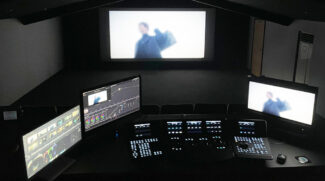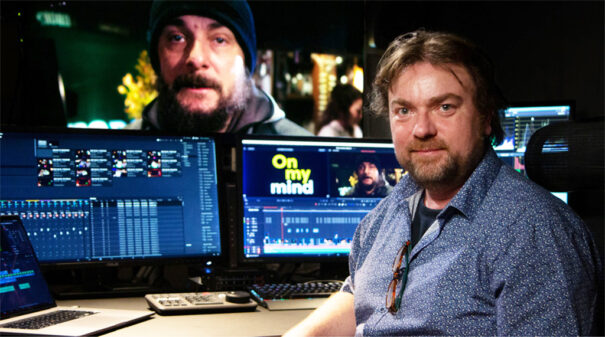Thomas Engell grades Oscar-nominated short film ‘On my mind’ with DaVinci Resolve
Blackmagic Design’s DaVinci Resolve Studio software was used by colourist Thomas Engell to put the finishing touches on On my mind, a short film nominated for the 2022 Oscars.
Directed by Martin Strange-Hansen, this bittersweet story blends elements of fiction with memories and was nominated for an Oscar for Best Short Film. With Ian Hansen as cinematographer, the film was produced by Thomas Engell of Copenhagen-based post-production company Sound of Sunrise.
The tight budget and strict rules around Covid meant that the cast and crew were kept to a minimum. This basic working dynamic required all of Engell’s experience as an editor and his knowledge of visual effects, colour grading and audio. As the colourist recalls: “For this project, I worked like a hermit away from production and without an edit assistant which was only possible thanks to the multidisciplinary nature of DaVinci Resolve and the tools it offers.”
On my mind was shot in 4K RAW format, which greatly facilitated Engell’s colour grading work. Colour grading via DaVinci Resolve was done on the ACES system for P3 and Rec. 709 versions.
 Leveraging DaVinci Resolve
Leveraging DaVinci Resolve
Sometimes, to achieve his goal, Engell decided to combine multiple shots, thus enhancing the narrative and interpretative weight of the scene: “Using digital cloning techniques, I could use one take of an actor and blend it into another shot if that helped improve the story or the performance. I might alter the timing of a shot by a couple of frames, and in doing so, subtly change our perception of a character. These techniques are not new, but tools like Resolve’s OpenFX make it far easier.”
Similarly, Engell used colour and light during the DaVinci Resolve colour grading process to improve the composition of the scenes: “We are trying to focus the audience’s attention on what is important in a frame. Provided it makes narrative sense, I would apply masks and flags in Fusion, add or subtract light in the grade, and then create a mosaic on faces that changes with their movements.”
On the other hand, the advanced tools in DaVinci Resolve’s Color module allowed Engell to fix minor issues, such as cleaning up images and removing objects. He also used Fusion’s shot tracking feature to replace backgrounds, while preliminary room effects, sound design and audio editing were done in Fairlight: “I want things to fly. The tools within DaVinci Resolve whether editing, grading or compositing are so intertwined that it makes storytelling so much quicker and more intuitive,” Engell concludes.
¿Te gustó este artículo?
Suscríbete a nuestro RSS feed y no te perderás nada.
















